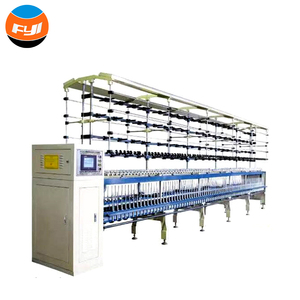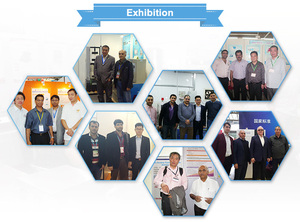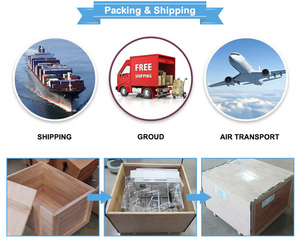
All categories
Featured selections
Trade Assurance
Buyer Central
Help Center
Get the app
Become a supplier

(897 products available)


















Market Overview: The global market for pirn winding machines is witnessing robust growth, reflecting the broader trends in the coil-winding machinery sector. According to 360iResearch™, the coil-winding machine market expanded from $4.89 billion in 2023 to $5.23 billion in 2024, with a projected compound annual growth rate (CAGR) of 7.0%, aiming for $7.86 billion by 2030. This growth is primarily driven by advancements in automation and the increasing demand for efficient yarn production processes across various textile applications. Key regions contributing to this market include the U.S. and China, where investments in textile manufacturing are on the rise, further amplifying the demand for specialized machinery like pirn winders.
Industry Insights: The pirn winding machine market is influenced by several factors, including consumer behavior shifts toward high-quality and precision-engineered products. As manufacturers strive to enhance productivity and reduce operational costs, the adoption of advanced winding technologies becomes paramount. Major players in the market are focusing on innovation and strategic partnerships to capture niche markets, particularly in developing regions. Furthermore, the increasing emphasis on sustainable manufacturing practices is prompting companies to seek out machines that minimize waste and energy consumption. As the market evolves, the integration of digital technologies in pirn winding machines will likely reshape production processes, making them more responsive to market demands and customer preferences.
Pirn winding machines are specialized devices used in the textile industry to wind thread, yarn, or wire onto a pirn or bobbin. They are typically part of the weaving preparatory processes, where yarns need to be accurately wound onto pirns for ease of use in weaving looms. The following are the kinds of pirn winding machines:
Shuttle Pirn Winder:
This basic type of winding machine is designed to wind yarn onto a shuttle pirn directly. The pirn is placed in a holder or chuck, and the yarn is guided and wound onto the pirn as it rotates. Some simple versions might require manual guidance or movement of the yarn.
Shuttle Box Pirn Winder:
An advancement over the shuttle winder where the pirn is placed inside a box. It allows for better yarn guiding mechanisms, leading to more uniform winding. Additionally, it can accommodate different sizes of pirns and yarn tension requirements.
Automatic Pirn Winder:
These are modern machines that automatically wind yarn onto pirns without any intervention. They provide consistent and accurate winding, making them preferred in high-production environments. Automatic pirn winders often have multiple spindles, microprocessor controls for winding length, speed adjustment, yarn tension control, and stop-on-count features. This allows for efficient winding of several pirns simultaneously. The winding may also include reverse winding where the yarn is wound off at the end of the process, helping reduce time significantly.
Computerized Pirn Winding Machine:
It is a sophisticated winding device with computerized control for precise yarn tension and winding speed management. These machines offer programmable winding patterns, so they are useful when specific winding requirements are necessary. Also, they can have multiple spindles that wind yarn onto several pirns simultaneously, increasing production efficiency.
Over-September Pirn Winder:
The machine is made specifically to wind threads or yarns for over-sizing pirns (larger bobbins typically used in some weaving operations). It usually has features to handle the larger diameter and length of pirns.
Universal Pirn Winder:
A versatile machine that can wind various types of pirns (shuttle, regular, and others) for different weaving operations. Also, it might have adjustable parameters to accommodate various yarn types and sizes.
Manual Pirn Winder:
Before the advent of automatic and semi-automatic machines, manual winding was common. In this case, the operator would manually turn a handle to rotate the pirn while guiding the yarn onto it.
Pirn winding machines' specifications will vary depending on the design and purpose of the machine. Key specifications include the winding capacity, control system, and winding speed.
Proper maintenance is essential to ensure the pirn winding machine's efficiency, productivity, and longevity. The following maintenance tips will help manufacturers extend the life of their machines.
The pirn winding machines are immensely helpful in the textile industry. They help to wind threads on bobbins or pirns used for weaving. Nevertheless, the machines' utility is not limited to this field alone. Several industries use them with slight alterations to wind threads or wires on various types of spools.
In the broad spectrum of the textile industry, these machines are indispensable in creating the following fabrics:
Other textile products that often utilize the pirn winding machine include curtains, cushion covers, terry towels, and jute or silk bags.
As with any machinery used to improve production speed, efficiency, and quality are essential factors when selecting a pirn winding machine. Choose one that will help reduce defects in the products created and speed up the production process by winding threads or wires at a faster rate.
A versatile machine that can handle multiple types of spools will be more beneficial as it can be used for various purposes or applications. Winding capacity, speed, and precision are vital features to look for that will be included in the specification of the selected machine.
Impact on the environment is becoming an increasingly important issue to consider when selecting industrial machinery. Choose a pirn winding machine that uses energy efficiently and is made from environmentally sourced materials.
Finally, the after-sales service that will be provided to buyers is an essential factor to consider when selecting a supplier. Damage to industrial machinery during transport can happen, and any requirement for maintenance or repairs will be necessary to ensure the machine operates at its full capacity.
Here are the factors that business buyers should consider when purchasing a pirn winder for sale:
Production Rate:
A buyer should determine the production rate of the machine required. Assess the winding speed and efficiency of different models. Select a pirn winder that can meet current demand without compromising quality.
Flexibility:
Choose a machine with adjustable parameters like pirn size, yarn tension, and winding pattern. This allows easy changes to accommodate future requirements. Consider modular designs permitting quick attachment changes.
Automation:
As employers prefer automated processes, select a winding machine with automated features. Look for programmable controls, sensors for monitoring operations, and automatic yarn threading and pirn loading/unloading.
Quality Control:
A built-in quality control system will help monitor and maintain the consistency of the product. Opt for machines with tension control, inspection systems, and feedback loops for correction.
Ease of Use:
Consider intuitiveness when selecting the pirn winding machine's operation and controls. Employees can easily learn and master the winding machine's use.Multiple language options and straightforward settings reduce training time and increase efficiency.
Machine Size:
The machine's size and weight will affect lines used for pirn winding purchase. Make sure it will fit in the production space and can be easily installed. Consider the number of machines that the purchase budget allows for to achieve the desired production target economically.
Cost:
Consider the initial investment, operating costs, and maintenance expenses. Evaluate the cost-effectiveness equation by calculating the potential return on investment from increased productivity and reduced defects.
Q1: How do pirn winding machines improve operational efficiency?
A1: Efficiency is improved because the machines can perform a number of winding processes at the same time. Operators will not need to supervise the winding of every single pirn, and this will reduce manpower costs and make production faster.
Q2: Can pirn winding machines be modified to accommodate different types of yarns?
A2: Yes, most machines can be modified provided that the modifications are done correctly. In addition, the winding patterns and tension used for the different yarns may require adjustments.
Q3: What are the safety features of pirn winding machines?
A3: Modern pirn winding machines have a number of safety features such as emergency stop buttons, protective enclosures, and safety interlocks. The emergency stop button will quickly stop the machine operator in an emergency situation. The operator won't be able to access dangerous parts of the machine when it is running thanks to the protective enclosures. The safety interlocks make sure that the machine is not operated with open enclosures.
Q4: What is the lifespan of a properly maintained pirn winding machine?
A4: These winding machines can last for many years if they are properly maintained. Routine maintenance and periodic checks are important because they help pick up any potential problems early so that they don't develop into serious issues.